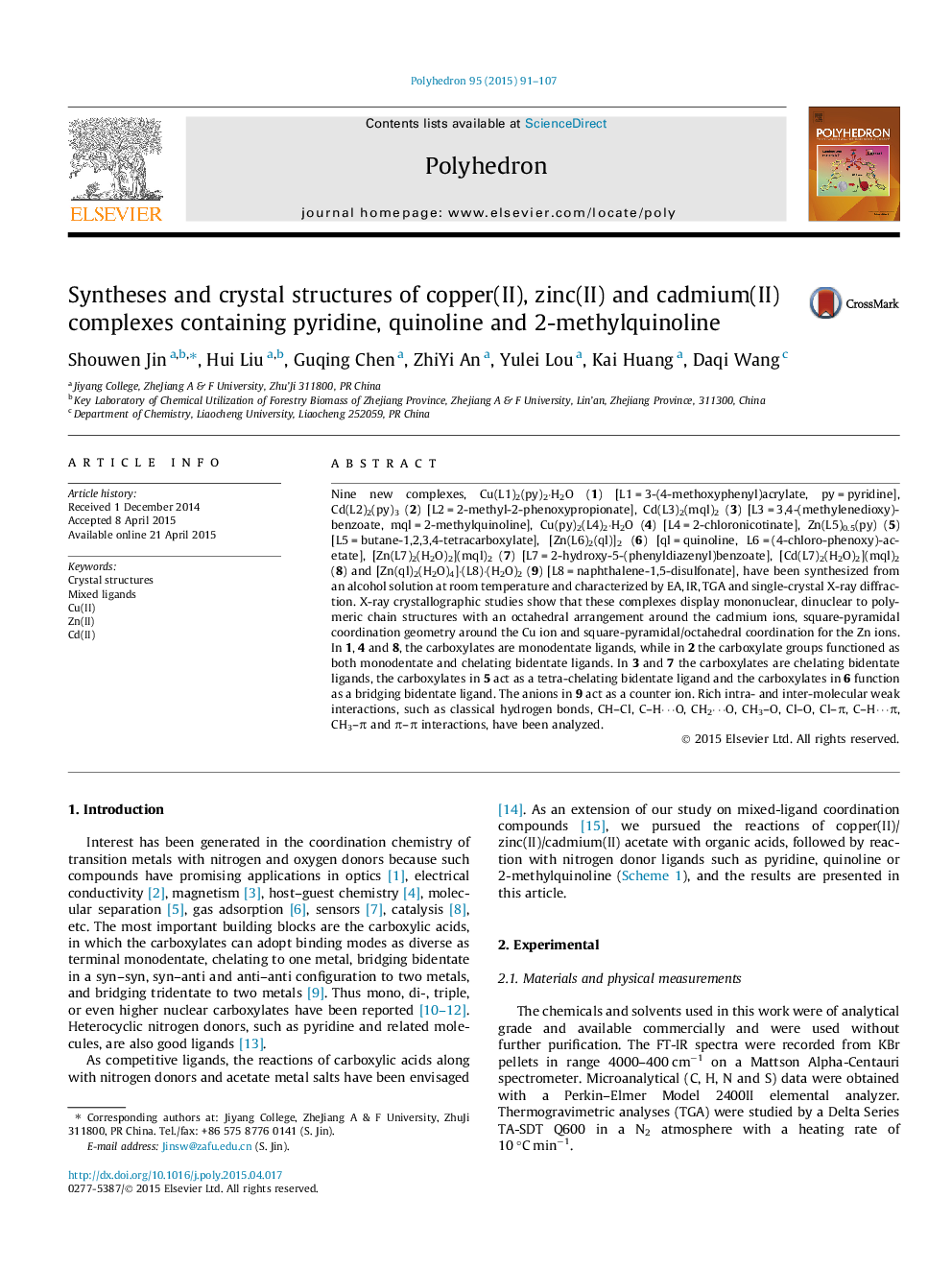| Article ID | Journal | Published Year | Pages | File Type |
|---|---|---|---|---|
| 1334381 | Polyhedron | 2015 | 17 Pages |
Nine new complexes, Cu(L1)2(py)2·H2O (1) [L1 = 3-(4-methoxyphenyl)acrylate, py = pyridine], Cd(L2)2(py)3 (2) [L2 = 2-methyl-2-phenoxypropionate], Cd(L3)2(mql)2 (3) [L3 = 3,4-(methylenedioxy)benzoate, mql = 2-methylquinoline], Cu(py)2(L4)2·H2O (4) [L4 = 2-chloronicotinate], Zn(L5)0.5(py) (5) [L5 = butane-1,2,3,4-tetracarboxylate], [Zn(L6)2(ql)]2 (6) [ql = quinoline, L6 = (4-chloro-phenoxy)-acetate], [Zn(L7)2(H2O)2](mql)2 (7) [L7 = 2-hydroxy-5-(phenyldiazenyl)benzoate], [Cd(L7)2(H2O)2](mql)2 (8) and [Zn(ql)2(H2O)4]·(L8)·(H2O)2 (9) [L8 = naphthalene-1,5-disulfonate], have been synthesized from an alcohol solution at room temperature and characterized by EA, IR, TGA and single-crystal X-ray diffraction. X-ray crystallographic studies show that these complexes display mononuclear, dinuclear to polymeric chain structures with an octahedral arrangement around the cadmium ions, square-pyramidal coordination geometry around the Cu ion and square-pyramidal/octahedral coordination for the Zn ions. In 1, 4 and 8, the carboxylates are monodentate ligands, while in 2 the carboxylate groups functioned as both monodentate and chelating bidentate ligands. In 3 and 7 the carboxylates are chelating bidentate ligands, the carboxylates in 5 act as a tetra-chelating bidentate ligand and the carboxylates in 6 function as a bridging bidentate ligand. The anions in 9 act as a counter ion. Rich intra- and inter-molecular weak interactions, such as classical hydrogen bonds, CH–Cl, C–H⋯O, CH2⋯O, CH3–O, Cl–O, Cl–π, C–H⋯π, CH3–π and π–π interactions, have been analyzed.
Graphical abstractDue to weak non-covalent bonding interactions, the complexes display 3D structures.Nine new complexes derived from pyridine, quinoline and 2-methylquinoline have been synthesized and characterized by EA, IR, TGA and single-crystal X-ray diffraction. These complexes display mononuclear, dinuclear to polymeric chain structures. The central metal ions adopt coordination modes from square-pyramidal to octahedral. The carboxylates adopt monodentate, chelating bidentate and bridging bidentate coordination fashions. Extensive non-bonding interactions in 1–9 have been analyzed.Figure optionsDownload full-size imageDownload as PowerPoint slide
